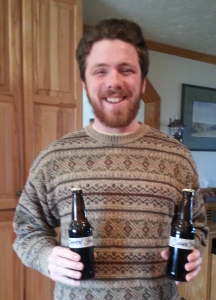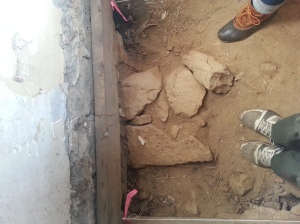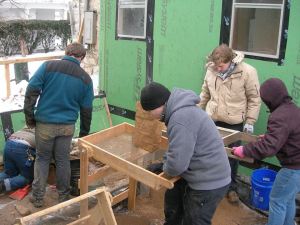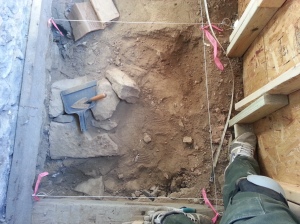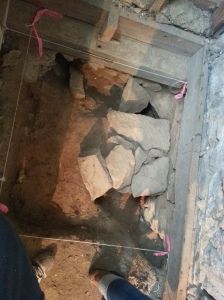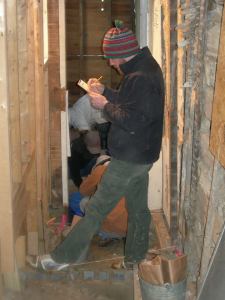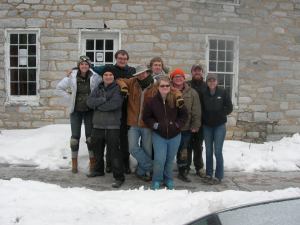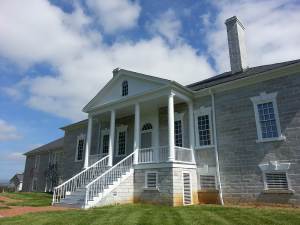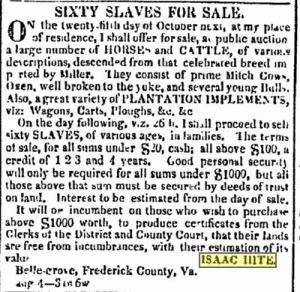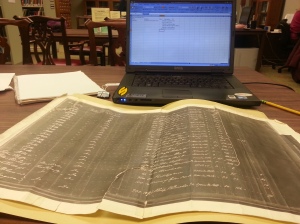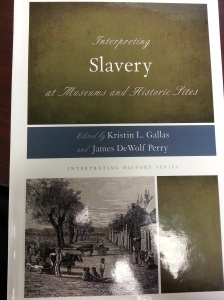This Saturday I will be graduating with a B.A. in History and Public History. The two years I have spent at JMU in the history department taught me crucial skills for my future academic and professional careers. Professors cared about the well being of their students and pushed them to succeed in numerous ways. When looking back I have been very successful during the last two years. I have presented papers at local and regional conferences, completed an Honors Thesis, accepted into graduate school, awarded scholarships, and excelled in my professional career. With that being said, I want to share some skills I have learned and that others may find useful.
1. Begin Research and the Writing Process Early
In high school it was easy to write a paper the night before it was due and receive an adequate grade. Even during my time in community college I could get by leaving a term paper to the last two or three days before its due date. One thing I learned quickly at JMU is that in order to produce a well rounded and polished paper, research and writing needs to begin as soon as possible. One class, History 395 taught us history majors how to conduct proper historical research by using the vast amount of databases provided by the JMU Library. These databases proved immensely helpful in shaping an argument. Vice versa, the earlier the writing process begins the easier it is. This allows you to try out ideas, let them sit for a day or two and then reassess them. By writing early and often, the paper can be completed before the due date. This provides crucial time to edit and adjust the paper. As Ernest Hemmningway said, “the first draft of anything is shit,” Give your paper to your peers of professors and have them suggest changes.
2. Get to Know Your Adviser and Professors
One reason I was successful during my time at JMU was because I got to know my adviser really well. First off, if you are assigned an adviser that does not mesh well with your interests, or personality, switch advisers as soon as possible. Advisers are there to help you, and if you do not feel comfortable approaching them or talking to them they will be no use. After two weeks at JMU I switched my adviser to Dr. Dillard. Dr. Dillard was amazing at guiding me through the academic process, suggesting possible graduate programs, and most importantly chaired the committee of my Honors Thesis. I know the hours of talking about my research and writing in his office will pay off in the long run. Outside of advisers, get to know the professors in your field. I got to know a number of public history professors very well at JMU. These relationships pay off huge dividends when it comes to writing recommendation letters, and forming professional networks after graduation. Having a close relationship with professors also makes you approachable to professors. This leads me to my next point.
3. Take advantage of every opportunity that comes your way
The JMU history department has numerous opportunities outside of the classroom to excel. One way you get to know about these opportunities is by having close relationships with your professors. During my undergraduate career I presented papers locally in Virginia, and regionally at the CAA Conference of Undergraduate Research at Drexel University. I would not have known about these possibilities if it were not professors and my adviser suggesting that I submit my research. Take advantage of these opportunities. It may seem like a pain to give up a Saturday or a whole weekend to rub elbows with other academics at a conference. But these conferences provide crucial networking skills, build your resume, and help hone your public speaking skills.
Besides conferences take advantage of field work and field trips. Every semester I had to give up at least three Saturdays to travel to museums or complete archaeological field work. Again, it may seem like a pain to do so, but the ability to get hands on experience will pay off immensely in the long run. The same should be said about internships. Make the best out of them, and produce a tangible project at the end to add to your resume. Internships provide a way to form lasting relationships and this networking can help you once you graduate. Lastly, if you can join any honors society that you can, whether it is the history honors fraternity, Phi Alpha Theta or the national honors society, Phi Betta Kappa.
4. Utilize Out of Classroom Experience to Tailor your Academic Work
I was fortunate enough that during my undergraduate career I was able to work professionally in the public history field. I continued by job with the National Park Service at Cedar Creek and Belle Grove National Historical Park as I attended classes. Granted it was a lot of effort to balance life, work, and school work. But I learned crucial life skills having to balance these all at once. Having this experience in the field allowed me have one foot in the professional arena and one in the academic sphere. This created a symbiotic relationship where I was applying the skills I have learned professionally in my academic work, and using my new academic knowledge in a professional setting. What this led to is numerous research papers being based of questions I came up with at work. A great example of this is my Honors Thesis. Also being able to learn ideas about public history in the classroom and apply them to my professional career often in a matter of days reinforced many of the principles of museums and public history. This solidified many of the ideas quickly as I was able to apply them. Again I realize I am out of the norm having the ability to work with the NPS while being in school. But use your skills you have learned in school in your internship, or other part-time jobs you hold during school
Some may say that the JMU history department is not a top-tier program compared to UVA or William and Mary. Sure these have big reputations with larger than life faculty. But I argue it is not the program itself, but it is what you make out of it. The opportunities I was granted at JMU to excel were there, and I took advantage of them. Too often I see students doing the bare minimum and then complaining about their situation. Undergrad is only for four years (two for me). These years are crucial to developing the professional skills needed to succeed and networking for the future.

